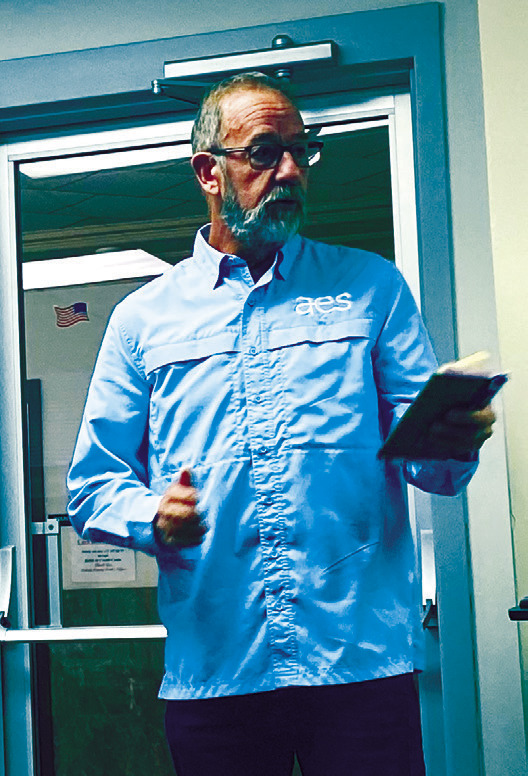OSWEGO — Labette County commissioners on Monday heard an update on a 400-megawatt solar energy project that is proposed for North and Neosho townships in northeast Labette County.
Mark Randall of AES Clean Energy discussed the project with commissioners. He’d talked to commissioners earlier this year about the project.
The solar energy project has acres leased at this time and will not need more. There are about 10 landowners who are leasing to AES, Randall said. The energy produced by the solar panels will be sent to an AES substation to be built north of U.S. 400 in the area of Victory Road. From there, a transmission line will carry that energy southeast to Evergy’s Neosho Substation.
AES has been completing studies and finishing land work.
Randall said with zoning regulations in place, AES is working toward seeking a conditional use permit from the county planning commission and zoning administrator to allow the solar collection sites, which also include a battery storage component, the substation and the transmission line to Neosho.
Timing is the main concern, he said. Regulations on solar energy, battery storage and transmission lines have not been approved, a process that could take a couple of months at least. He said he understands that the zoning regulations as they exist now will allow his company to seek a conditional use permit.
AES needs to make an investment decision on whether to continue on the project early in 2025. Part of that decision includes understanding the pathway to get a permit from the county for the project by January.
By then, he will need to recommend to AES’s investment committee to proceed based on interconnection requirements with the Southwest Power Pool and other factors.
“I’m running out of runway here. That doesn’t seem like there’s enough time for me to wait for the planning board to finish their work and then to apply for the conditional use permit in time between now and January with the holidays coming,” Randall said in asking about applying for a conditional use permit before the zoning regulations are set for solar projects.
He wants to get the process started to apply for that permit and will work with Zoning Administrator Mel Hass and the county planning committee and others.
He said this will allow him to have a clear path forward when talking with the AES investment committee.
“And now it’s what they call decision .2. But the numbers get bigger. They get dramatically bigger. So our investment in the project is going to increase significantly. We move into the engineering phase of the project,” Randall said.
More detailed studies will be forthcoming and more fieldwork.
See COUNTY, Page 3.

Mark Randall of AES Clean Energy visited with county commissioners Monday about the company’s proposed solar energy project in northeast Labette County.
He said his purpose in meeting with commissioners is to let them know that AES wants to pursue this path for the project. He said in about seven weeks he hopes to have a permit application ready to submit to the zoning administrator.
He also will consult with county agencies and other stakeholders about the project and include this information in the permit application.
Randall said AES leases four to five acres inside the fence per megawatt produced. That means AES has 2,000 acres leased inside the fence. Overall, there are 10 acres leased for every megawatt but only five are inside the fence.
Commissioner Cole Proehl asked Randall about the economic impact the project will have on the county.
Randall said the construction process lasts about two years and will involve 600 workers. The company tries to use local resources and contractors where possible.
With the current timeline, construction would start in early 2027 and finish in late 2028.
Randall said he wants to understand tax issues related to the project. He said other projects have had payment in lieu of taxes agreements with counties. The tax/PILOT issue will weigh into the AES investment decision on the project.
Randall added that the project if it gets approved could create synergy for the county and bring in other companies.



